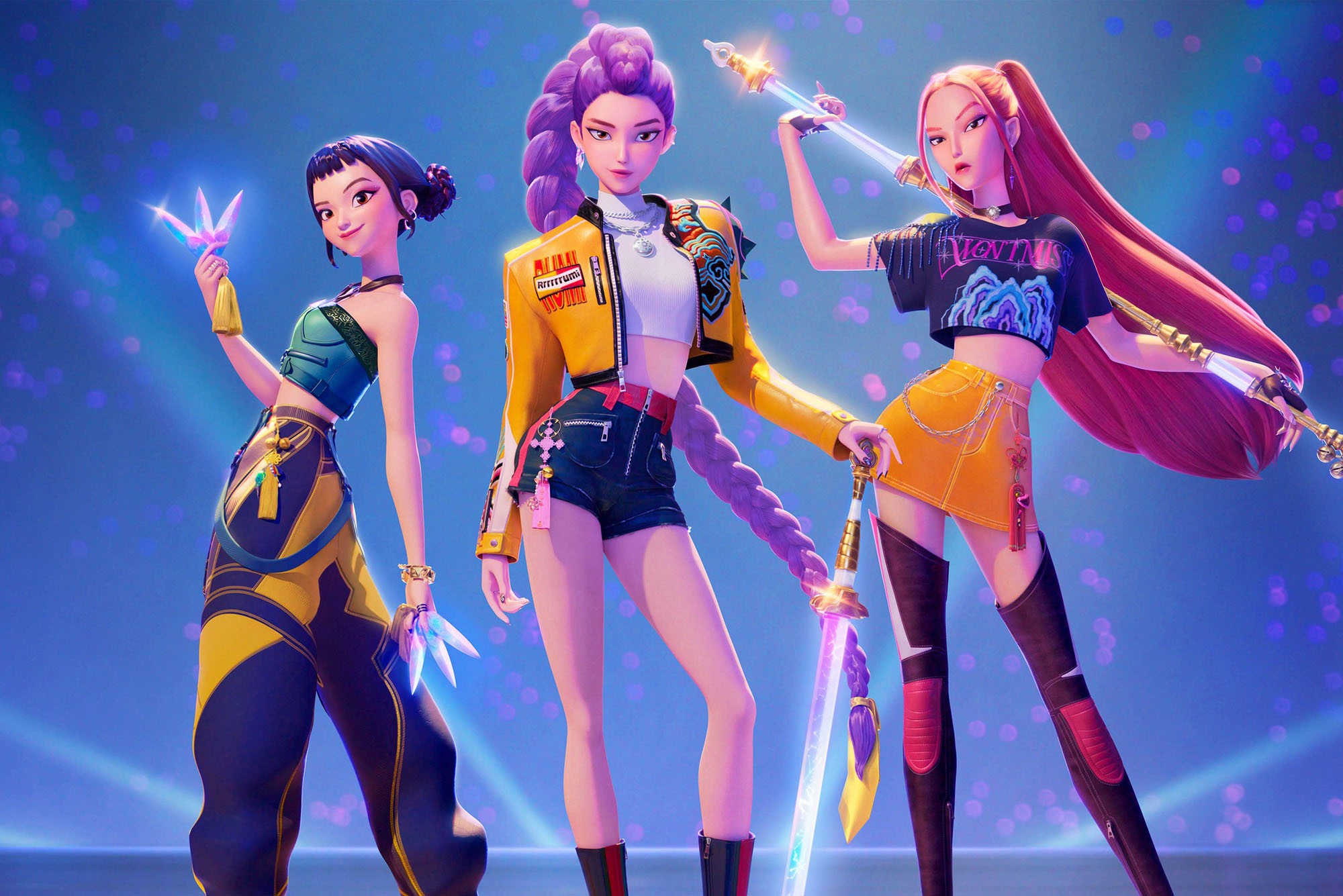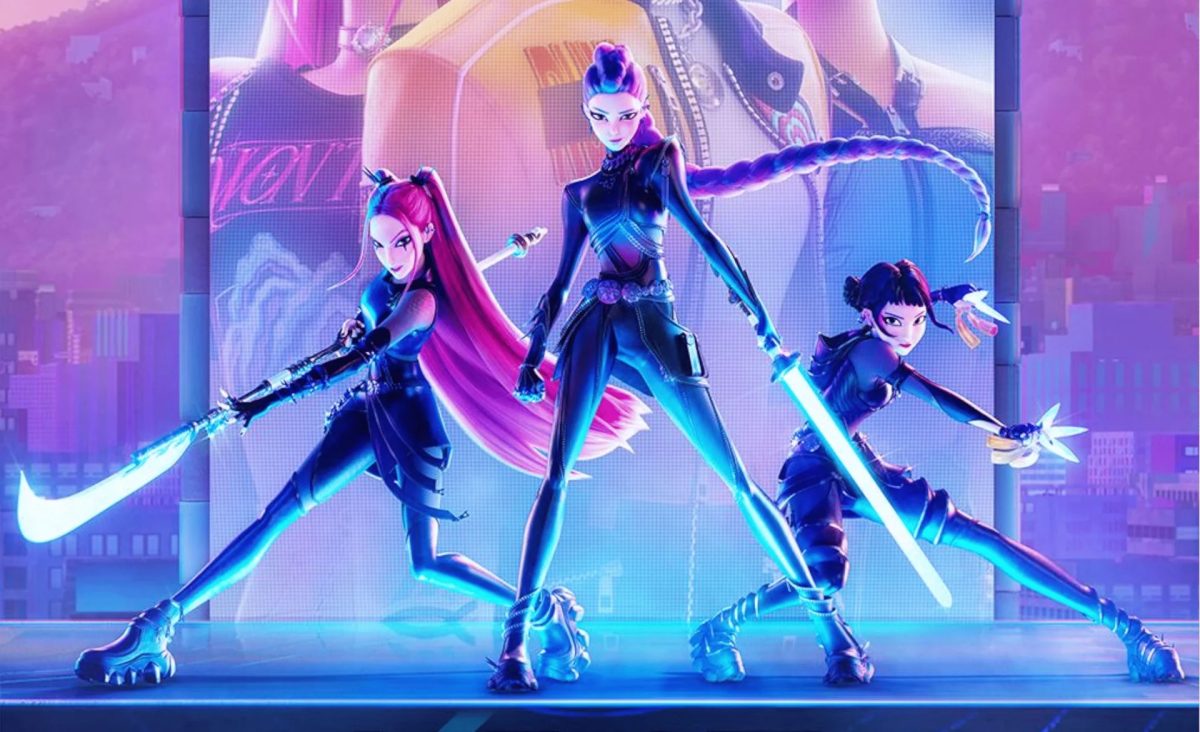Sony Pictures Animation’s KPop Demon Hunters was undoubtedly the movie of the summer (if not the year), with the film becoming a cultural phenomena and setting—or breaking—a long list of astonishing records. With some of its many achievements including becoming the number one most watched movie on Netflix (ever!), being the highest charting soundtrack of 2025 on the Billboards 200, and topping the Billboard Global 200 (with HUNTR/X’s hit song “Golden” reaching number one), it raises the question—what made the film so overwhelmingly popular?
The widespread recognition and success of the film is, in part, a result of the effort put into its production. The animation and discography in particular were simply breathtaking, evidently the results of the whopping seven-year production process.
For example, eight of the movie’s songs appeared on the Billboard Hot 100, and the two fictional groups in the movie, the Saja Boys and HUNTR/X, became the highest charting K-pop boy band and girl group in U.S. Spotify history, respectively. Additionally, “Golden” not only became the number one song on the Billboard Global 200, but also the first song by a K-pop girl group to do so, underscoring both the KPop Demon Hunters’ revolutionary breaking of records and its dominance of music charts. The bright, vibrant colors and fun animation choices, especially in the anime-inspired facial expressions, contributed to the movie’s popularity. Interestingly, all human characters were animated at 12 frames per second, while the demons were at 24 frames per second, emphasizing their smoother, almost “otherworldly” characteristics, further exemplifying the meticulous attention to detail.
Going beyond its stellar visuals and songs, KPop Demon Hunters continued to deliver through their portrayal and references to Korean culture. With the most obvious of these being K-pop itself, the movie captured key tenants of the K-pop industry, such as music shows, fan signing events, dance challenges, and more. Furthermore, the film paid homage to two of Korea’s most popular bands—TWICE, “The Nation’s Girl Group,” and EXO, branded the “Nation’s Pick” by the South Korean government—by utilizing their songs “Strategy,” “Love Me Right,” and the hit original song “Takedown.” (There was even a cameo for the comparatively-new yet extremely popular rising K-pop girl group MEOVV).
While saying that K-pop is representative of the entire Korean culture is a vast (and incorrect) oversimplification, it is certainly a significant facet in its modern iteration. KPop Demon Hunters continued to deliver by referencing more traditional aspects of Korean culture. The Saja Boys, for example, were inspired by the “jeoseung saja,” spectral messengers in the country’s mythology similar to the grim reaper. Similarly, the weapons of HUNTR/X-the “saingeom,” “woldo,” and “shin-kal,” were all based on Korean ceremonial tools. Maggie Kang, the producer of KPop Demon Hunters, even mentioned that they had an entire Korean cultural committee to ensure authenticity and accuracy.
I personally believe the success of Kpop Demon Hunters can be attributed to the incredible lengths the production team put into the movie. The stellar animation and extremely catchy discography paired with the well-thought-out nods to Korean modern and traditional culture truly showcase the commendable efforts of everyone involved. The film continues to break records far after its release date; its special weekend sing-along event, where it was screened in 1,750 theaters, KPop Demon Hunters gave Netflix its first box office win, grossing about twenty million dollars in just two days. I truly hope that impactful movies such as this one can continue to celebrate aspects of their culture and share them with a worldwide audience.


